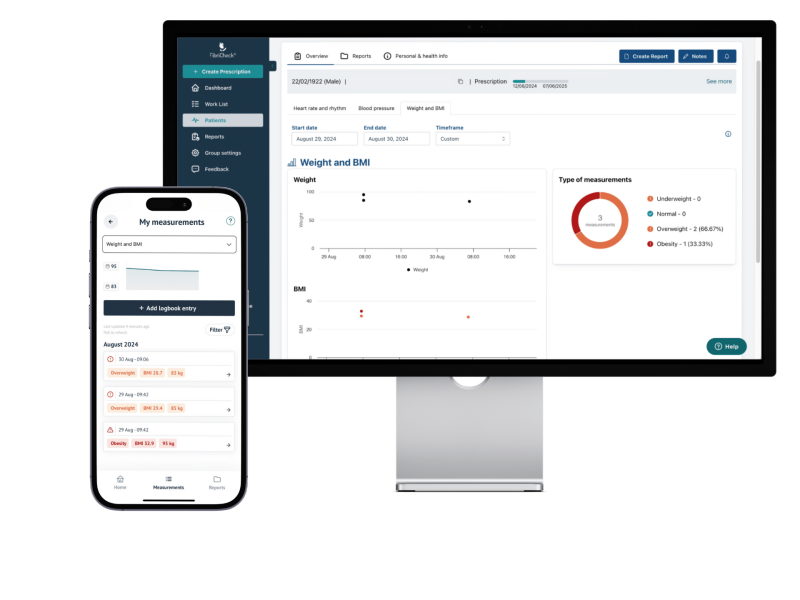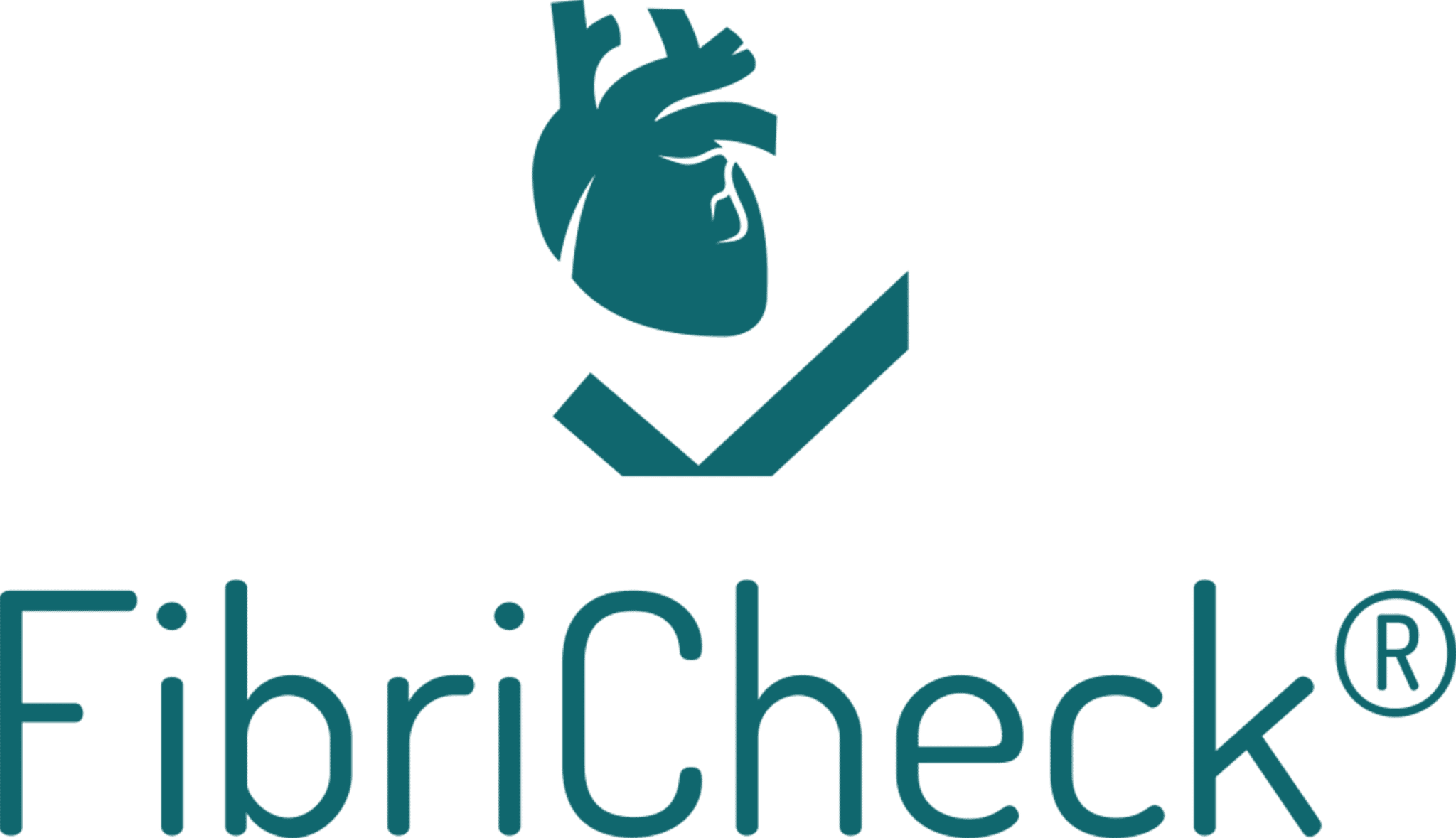We are committed to continuous innovation and enhancement of our product features to improve remote heart health monitoring. To provide deeper insights into risk factors for heart conditions, we have integrated a weight logging functionality into FibriCheck. This new functionality enables users to log their weight, which leads to increased insights into BMI and heart health for both users and their physicians.
Why are we adding a weight logging functionality to FibriCheck?
There are quite some risk factors to consider when monitoring heart health. To effectively track these, we introduced a blood pressure feature last year, recognizing hypertension as a major contributor to heart disease. Now, we’ve further enhanced FibriCheck by adding a weight logging functionality, addressing another key risk factor for heart disease—obesity.
Being overweight increases the risk of suffering from hypertension, diabetes, and obstructive sleep apnea, which are all associated with the development of heart disease and stroke. Obese individuals are also more likely to develop atrial fibrillation (AF) than people with a healthy weight. This happens because fatty tissue can lead to an enlargement of the left atrium, which causes inflammation and oxidative stress and ultimately leads to changes in the electrical system of the heart. Obesity also complicates AF treatment, as it is linked to complications during AF ablation and higher recurrence rates of AF after ablation.
Being overweight is a modifiable risk factor that can have a significant impact on the development of heart disease when addressed. The ESC guidelines state that achieving a healthy weight can reduce blood pressure, dyslipidemia and the risk of developing type 2 diabetes mellitus. This strongly improves the cardiovascular risk profile. Studies show that every 5 kg of weight loss can reduce the risk of developing AF by 12%.
Weight is also an important factor in the follow-up of heart failure, together with other vital parameters such as heart rate and blood pressure. By tackling excessive weight, patients may improve their symptoms and increase their exercise capacity. The ESC guidelines also recommend telemonitoring to support and optimize care for heart failure patients. Frequently collected data on symptoms, weight, heart rate, and blood pressure can help guide patients to seek further advice from their healthcare provider and can provide useful information required to adjust their therapy.
With our new functionality, healthcare providers can gain important insights into the cardiovascular risk profile of their patients, while also empowering users to keep track of their weight and their heart health.
How does it work?
In order to see the values entered by your patients, you will first have to ask for the activation of this feature in the portal. You can do so by contacting support@fibricheck.com.
Patients will then be able to insert their weight values into the FibriCheck app. The app will automatically calculate the patients’ BMI based on the inserted data. Once this feature is activated, the results will be shared through the FibriCheck portal, where you can use them for additional insights into your patients’ cardiovascular risk profile. The results will also be included in the summary reports of your patients. The combination of valuable data such as heart rate, heart rhythm, blood pressure and weight ultimately helps support more informed decision making.

If you want to use this feature, you can request access by sending an email to support@fibricheck.com.
*note: this feature is only available in Europe
References
https://www.heart.org/en/healthy-living/go-red-get-fit/lose-weight-lower-heart-disease-risk#
https://www.ncbi.nlm.nih.gov/pmc/articles/PMC10387211/#
https://www.sciencedirect.com/science/article/abs/pii/S0002870315006882?via%3Dihub
https://www.sciencedirect.com/science/article/abs/pii/S0002870315006882?via%3Dihub
https://www.heart.org/en/health-topics/heart-failure/warning-signs-of-heart-failure/managing-heart-failure-symptoms#
https://academic.oup.com/eurheartj/advance-article/doi/10.1093/eurheartj/ehae176/7738779?searchresult=1
Created on August 30th, 2024 at 07:51 am
Last updated on September 17th, 2024 at 12:28 pm



